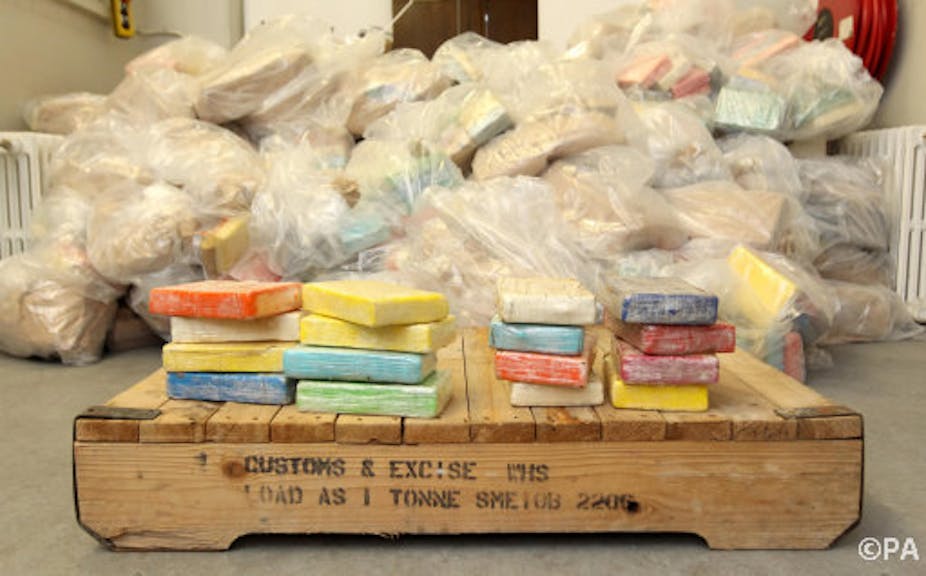Drug mules have barely been out of the UK news this August. First the “Peru two”, Melissa Reid from Scotland and Michaela Connolly from Ireland, were arrested attempting to leave Lima with just under 12kgs of cocaine. They claim they were coerced into carrying drugs by a gang they fell in with while on holiday in Ibiza.
Then, last week, Lindsay Sandiford’s appeal against the death sentence was rejected. She was arrested in Bali in May 2013 with just under 5kgs of cocaine. She also claimed that she was forced to carry drugs due to coercion and threats of violence against her family. She is currently on death row and will have one year in which to apply for clemency.
Neither Lindsay Sandiford, nor Melissa Reid and Michaela Connolly are “typical” alleged drug mules (if there is such a thing) - the majority of those arrested with drugs at national borders are men, whose arrest seldom attracts national attention. Everyone who researches drug trafficking finds accounts of coercion and threats yet this is the exception rather than the norm. In fact most become involved voluntarily, motivated by poverty and financial difficulties.
Venezuelan criminologist Rosa del Olmo was the first to write about women drug mules, about 20 years ago. She said, “discourses corresponding to specific economic and political interests have masked the true nature and dynamic of the drug issue by casting it in semi-mythical terms”.
This remains true today - international drug trafficking has spawned its own set of myths, which are unhelpful and do not bear close examination. Here is the real picture.
Mules are collateral damage in drug war
The idea that women such as the Peru Two are collateral damage in the greater war on drugs is false. Drug policy specifically targets low-level offenders as a result of political pressure to demonstrate a commitment to fighting drugs. For example, in the early 2000s Ecuador committed to arresting 12% more “drug traffickers” in return for economic investment from the USA. Very little of that “economic assistance” went towards strengthening the criminal justice system. The result was an overloaded criminal justice system, including prisons operating a double capacity. This is just one example of the result of “tough on drugs” policies.
As an aside, the use of the term “collateral damage” is explicitly military, suggesting the war is winnable, and that a certain amount of damage is inevitable. These kinds of claims can no longer be sustained.
Mules are coerced
A minority of mules are coerced into trafficking (so had little “choice”). Even willing mules cannot fully know what they are getting themselves into. Drug traffickers routinely misinform mules about what they are carrying and give them far larger quantities of drugs to carry than agreed. Because drugs arrive pre-packaged, they cannot check what they are carrying. This is important as type and weight of drug play a key role in punishments for trafficking.
Few mules know what punishments they face. Travel plans often change at the last minute. It is also very difficult to get accurate information. Go on, try and find out the sentence for carrying 500g of cocaine into the UK. Now imagine you don’t speak English …
They can seek help from police
This idea stems from the idea that the police will believe women when they are in distress. This is not the case: women seeking help for forced marriage, stalking or violence and threats from ex-boyfriends are routinely not believed. But let’s not go there.
Traffickers make sure mules have as little information as possible and evidence of threats is never left, making it difficult to go to the police. Reporting victimisation is difficult enough, never mind in a foreign country with no knowledge of laws or criminal justice. Since many mules are kept under close supervision, there is little opportunity to do so. Few drug mules, even those willingly involved, would have dared to return home without the drugs.
Drug smugglers deserve death
The UN Special Rapporteur on Extrajudicial, Summary or Arbitrary Executions has stated drug offences do not constitute “most serious crimes” and that executions for such offences are therefore in violation of international human rights law.
In reality, the majority of those executed for drug trafficking will not be “king pins” but are low-level offenders. Briton Akmal Shaik was executed in China in 2009. He had mental health problems and believed he was on his way to shoot a music video. There is considerable variation in what counts as “drug trafficking”. More than 10,000 people have been executed for drug offences globally since the 1970s. It seems very likely that many were low-level offenders: drug users, dealers and mules.
Execution is an effective deterrent
There is no academic evidence that harsh penalties deter criminals (in fact, just the mere likelihood of getting caught may be more significant a deterrent). And, in fact, only about 15% of drugs is carried over borders by mules - the rest travels in small quantities sent in the mail, or concealed in large shipments of legal goods. Some also travels concealed in yachts or other boats. Even if all mules could be halted, this would have little impact on drug availability.

